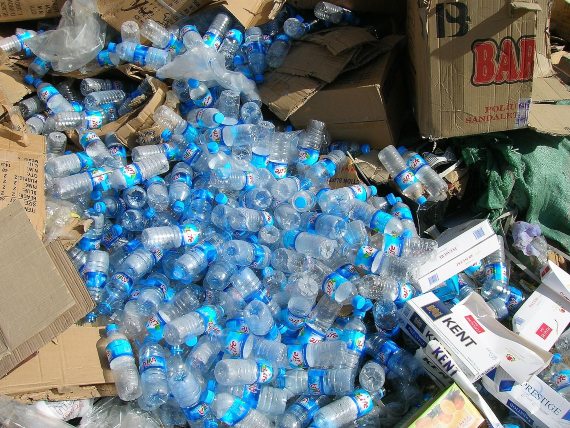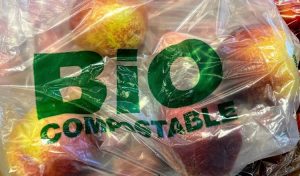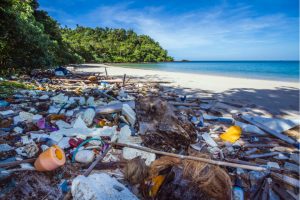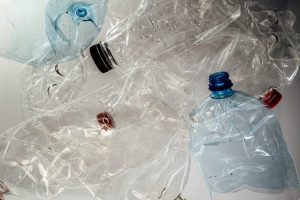What are bioplastics? How are they manufactured? Are they recyclable? Pampa García Molina, journalist and scientific educator, asked Auxiliadora Prieto, a research professor at the Margarita Salas Center for Biological Research of CSIC.

When we say bioplastics, many people immediately think of the plastics used in biodegradable trash bags. We have identified them as biodegradable, but that is not always the case. What exactly are bioplastics?
We have had a very hard time defining them because they are highly complex. It’s true that in the beginning bioplastic was associated with biodegradable; now there are so many opportunities. We consider bioplastic everything that has a biological origin – regardless of whether or not it is biodegradable. But there are also biodegradable bioplastics that do not have a biological origin. Then we say that the ‘bio’ foundation is very broad. We could define it by what it isn’t: plastic with a petrochemical origin that cannot be degraded.
What are the main differences with respect to traditional plastics, those that have a petrochemical origin?
The main differences between bioplastics and traditional plastics are:
- Origin: Bioplastics are obtained from renewable sources while traditional plastics come from oil.
- Biodegradability: Bioplastics are biodegradable, while traditional plastics are not biodegradable.
- Price: Bioplastics tend to be more expensive than traditional plastics.
Why are bioplastics more sustainable than traditional plastics, those with a petrochemical origin?
More sustainable… I don’t know if I would say more sustainable. What is really important is that the plastics become part of what is known as the circular economy. When plastic of petrochemical origins is recycled, it is more likely to enter into the whole circle of proper waste management; we can say that it is a sustainable approach.

However, bioplastics are already part of this circular economy from the beginning of their manufacturing process because the carbon we use to manufacture them comes from waste or renewables. That is what makes them more sustainable.
Tell us a little more about this manufacturing process for bioplastics.
Right now there are different strategies. There is one in which the bioplastics are not biodegradable. They are similar to the plastics derived from the petrochemical industry. They are the same. It’s just that they use a renewable source of energy for their manufacturing. Everyone is familiar with biofuel, the ethanol that is produced through microbial fermentation. Well, that same ethanol is used to make polyolefins, for example. The final material is recalcitrant; it can’t be recycled, yet it’s a bioplastic.

The option of using renewable materials also exists, but the technique to do so must be biotechnology, and also compostable and biodegradable. For example, this is what we are doing in the laboratory, which are bacterial (bio)polyesters. Although there are different types. We can also talk about those that are produced using natural products, such as starch, for example. These are the typical bags that were found at the beginning of this strategy. Plant starch is modified to give it these plastic properties.
In short, we can talk about two main groups:
- Natural polymers: Starch, cellulose and lignin are some examples of natural polymers that can be used to manufacture bioplastics.
- Synthetic polymers: Bacterial polyesters are an example of synthetic polymers that can be used to manufacture bioplastics.
Are they more expensive?
First, we have to define “expensive”. The price depends on the quality and in this case, when we talk about organic quality, and looking at the environment and sustainability, bioplastics are extremely cheap. But if we are referring to what a kilogram of material costs, then, yes, the price is more expensive, but it depends on what we are putting a price on exactly.

It’s hard to compete with the polymers from the petrochemical industry because they are so cheap. They are wonderful, very cheap materials and that is why they are so successful. What we try to do is to get the same benefits but without the environmental impact their massive use is having.
What bioplastics are we using and probably not even realizing it?
We don’t realize it because the concept, when we talk about bioplastics, is just a molecule, a type of plastic, but really, what we use for the applications we see on a daily basis are mixtures, so they probably have several types of bioplastics. For example, if you find a comb made of bioplastics, it is probably a mixture, known as ‘blends’, which are new formulations. And there are many types. We can find them in:
- Packaging: Bioplastics can be used to make bags, boxes, trays, etc.
- Personal hygiene items: Bioplastics can be used to make toothbrushes, combs, etc.
- Electronic parts: Bioplastics can be used to make electronic parts, such as connectors and printed circuit boards.
What is the future?
Bioplastics have enormous potential to reduce the environmental impact of traditional plastics. However, some challenges still remain that must be overcome, such as:
- The price: Bioplastics tend to be more expensive than traditional plastics.
- Availability: The ability to produce bioplastics is still limited.
- Consumer acceptance: Consumers are not yet familiar with bioplastics.
Do bioplastics also need to be separated and recycled?
Yes, bioplastics also have to be separated and recycled. Biodegradable bioplastics can decompose in the environment by microorganisms, but this process is slower than recycling. It is therefore important to separate bioplastics from non-biodegradable waste so they can be recycled.
Comments on this publication